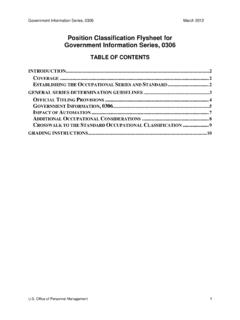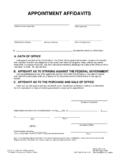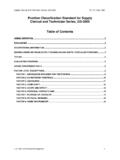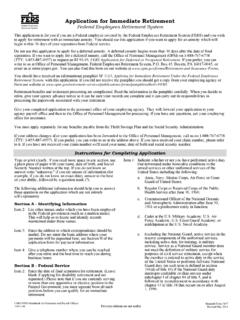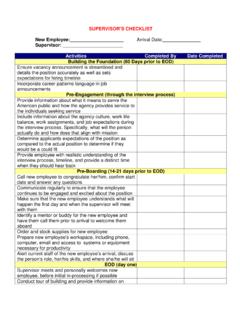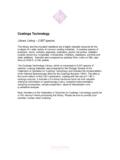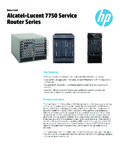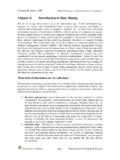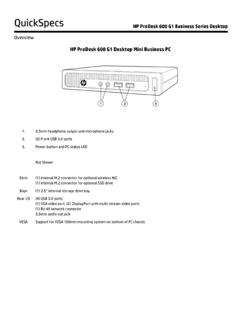Transcription of Human Resources Line of Business Data Model …
1 February 2006 Human Resources line of Business data Model Version OneHuman Resources line of Business (HR LOB) data Model Table of Contents INTRODUCTION .. 2 2 data Model 4 PROJECT APPROACH .. 6 Scope .. 6 7 DM VERSION 1 DOWNSTREAM USE .. 13 MIGRATION 15 Appendix 1: DM Workgroup 19 Appendix 2: DM Conceptual Model .. 23 Subject 25 Conceptual Model data Objects and 31 Appendix 3: Logical data Model .. 35 February 6, 2006 1 Office of Personnel management Human Resources line of Business data Model version 1 INTRODUCTION The Office of management and Budget (OMB) launched the Human Resources line of Business effort in April 2004 to build a set of interagency enterprise architectures in compliance with Federal Enterprise Architecture standards for the Human Resources Business function.
2 The OMB named the Office of Personnel management (OPM) the managing partner for the new Human Resources line of Business (HR LOB). The architectures provide a blueprint for transforming the Human Resources Business function throughout the Federal Government, providing a basis for the Federal Government to rethink its approach to Human Resources management . In addition, the architectures have the potential to enable the Government to significantly improve the delivery of HR services and address the pressing issues facing the management and operation of the Federal Government s Human Resources .
3 These include: Redundant systems, operations and investments. Disjointed HR systems that are not linked and do not share data . Declining knowledge-based HR workforce. Declining HR service delivery. Lack of integrated HR service delivery. Absence of performance measures and metrics for HR service delivery. The vision of the HR LOB is to provide Governmentwide, modern, cost-effective, standardized, and interoperable Human resource solutions providing common core functionality to support the strategic management of Human capital and addressing duplicative and redundant HR systems and processes across the Federal Government.
4 Objectives The objective of the HR LOB data Model (DM) is to identify the data needed to execute the HR LOB Business Reference Model (BRM) processes. The HR LOB DM is depicted at both the conceptual and the logical level to describe the data in as much detail as possible, but it does not specify how the data will be physically implemented in a database. The HR LOB DM also provides a blueprint of the data that is needed to execute the HR LOB BRM processes, but it does not prescribe a physical data structure for agencies and shared service centers. The HR LOB DM will not dictate how agencies February 6, 2006 2 Office of Personnel management Human Resources line of Business data Model version 1 or shared service centers design their physical data structures and their databases.
5 Future versions of the HR LOB DM will continue to depict data at the conceptual and logical levels but will not depict or prescribe physical data models. The HR LOB DM represents one of the interagency enterprise architectures. The long-term objectives of the HR LOB DM project are threefold: Define the data needed to execute HR LOB Business processes. Enable the Federal Government to communicate more accurately and efficiently about the structure, content, and purpose of Human Resources data . Enable standardization across three basic areas: o data Description: provides a means to more uniformly describe Federal data , encouraging use of standards and thereby supporting the data s discovery and sharing.
6 O data Context: facilitates discovery of data through an approach to the categorization of data according to category systems, or taxonomies, including linkages to the other Federal Enterprise Architecture (FEA) reference models. Under FEA data Reference Model (DRM) guidelines, data context refers to a standard approach to representing taxonomies that agencies use to categorize their data in order to share information regarding their data architectures. Such categorization enables the Business context of data to be well understood. o data Sharing: supports the reuse and exchange of data in cases in which sharing can consist of ad-hoc requests, and exchange can consist of more routine and often fixed, and reoccurring transactions between parties.
7 Near Term The near-term objectives and focus of this project are to: Establish a baseline that identifies data needed to execute HR LOB Business Reference Model processes. Since the BRM is a depiction of the target Business processes within the Federal Enterprise Architecture, the HR LOB data Model reflects the future state and is a forward-looking Model . Create a Model that can be used as a high-level planning tool to execute the HR LOB concept of operations. February 6, 2006 3 Office of Personnel management Human Resources line of Business data Model version 1 Long Term Over the long term, the data Model will support the HR LOB Business goals and objectives by documenting the recommended Federal government HR data elements needed to execute the HR LOB Business Reference Model .
8 As the DM evolves, it will be used by agencies and shared service centers to perform gap analysis to determine the differences between existing data structures and the DM. The DM is an iterative product and will advance as the following HR LOB and OMB Enterprise Architecture products are updated: Business Reference Model - provides the basis for the DM; as it is updated over time, the DM will also be updated to reflect changes. HR LOB Target Requirements - documents core and long-term Business requirements that will impact the DM. OMB FEA data Reference Model Guidance - provides direction on DM methodology and work products.
9 data Model Views The HR LOB DM version 1 is described by two different views, or models: Conceptual data Model (CDM): a single integrated data structure which reflects the structure of the Business functions rather than the processing flow or physical arrangement of data . At this level, high-level relationships are identified among different data objects. The purpose of the conceptual Model is to depict a technology-independent specification of the data required to execute HR LOB Business Reference Model processes. It serves as the focus of communication between technical and Business stakeholders and covers all BRM subfunctions.
10 Logical data Model (LDM): builds upon the BRM and includes a further level of detail that supports both processes and systems. At this level, the purpose is to describe the data in as much detail as possible, without regard to how data will be physically implemented in a database. The logical Model includes entities, attributes and relationships between entities. In the LDM: o All entities and relationships between entities are displayed. February 6, 2006 4 Office of Personnel management Human Resources line of Business data Model version 1 o All attributes for each entity are specified.


